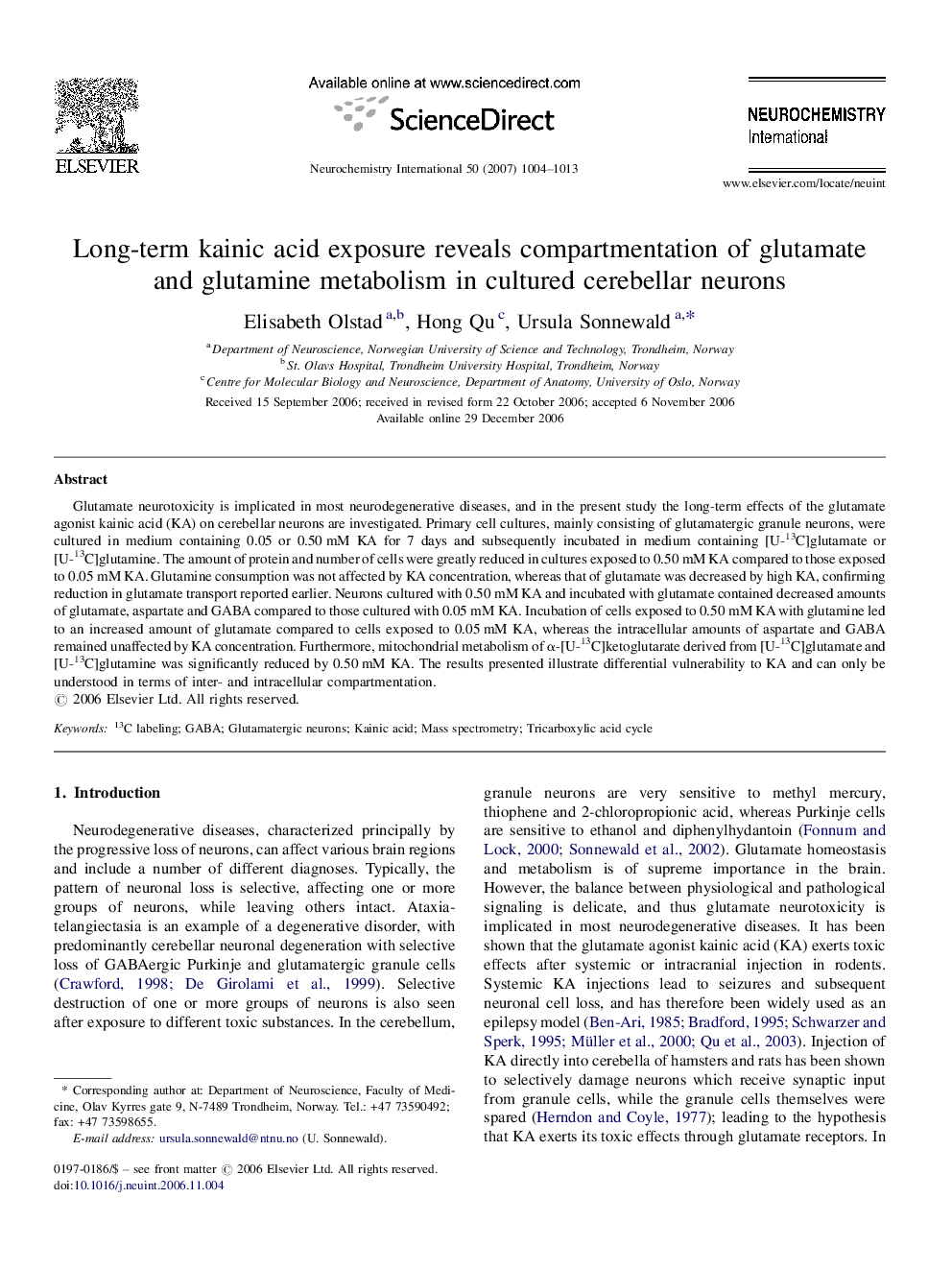| Article ID | Journal | Published Year | Pages | File Type |
|---|---|---|---|---|
| 2202029 | Neurochemistry International | 2007 | 10 Pages |
Abstract
Glutamate neurotoxicity is implicated in most neurodegenerative diseases, and in the present study the long-term effects of the glutamate agonist kainic acid (KA) on cerebellar neurons are investigated. Primary cell cultures, mainly consisting of glutamatergic granule neurons, were cultured in medium containing 0.05 or 0.50 mM KA for 7 days and subsequently incubated in medium containing [U-13C]glutamate or [U-13C]glutamine. The amount of protein and number of cells were greatly reduced in cultures exposed to 0.50 mM KA compared to those exposed to 0.05 mM KA. Glutamine consumption was not affected by KA concentration, whereas that of glutamate was decreased by high KA, confirming reduction in glutamate transport reported earlier. Neurons cultured with 0.50 mM KA and incubated with glutamate contained decreased amounts of glutamate, aspartate and GABA compared to those cultured with 0.05 mM KA. Incubation of cells exposed to 0.50 mM KA with glutamine led to an increased amount of glutamate compared to cells exposed to 0.05 mM KA, whereas the intracellular amounts of aspartate and GABA remained unaffected by KA concentration. Furthermore, mitochondrial metabolism of α-[U-13C]ketoglutarate derived from [U-13C]glutamate and [U-13C]glutamine was significantly reduced by 0.50 mM KA. The results presented illustrate differential vulnerability to KA and can only be understood in terms of inter- and intracellular compartmentation.
Related Topics
Life Sciences
Biochemistry, Genetics and Molecular Biology
Cell Biology
Authors
Elisabeth Olstad, Hong Qu, Ursula Sonnewald,
